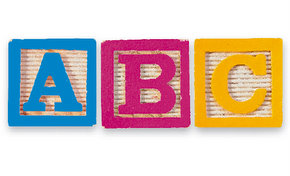
A lack of finance is bad news for a sector as capital intensive as print. While there’s a general feeling the industry is on the nose with lenders, printing finance expert Wade Oldham, who helped with this feature, says banks are largely being reasonable. That said, it doesn’t hurt to brush up on available finance options.
Hire purchase (HP)
This is where, in order to enable the customer to buy an item that they cannot afford to purchase outright, a finance provider will lend the money for the purchase in return for an agreed deposit amount and a fixed term of rent payments. Each month for the contract period, the customer pays a “rent” amount for the purchase, which is a proportion of the sale price plus interest. When the amount paid back to the finance provider is equal to the value of the purchase, plus agreed interest, the contract ends and ownership transfers to the customer. During the period of the contract, the purchased item is on the customer’s balance sheet but the item is the property of the lender. Therefore, if payments are missed, the lender has the option to seize the item. This also means any major modifications to the item require the lender’s permission. Any damage caused to the item is the customer’s liability to fix. HP is predominantly used by privately owned businesses.
Pros Proven, tried-and-tested model with transparent structured cost from outset; the asset will be yours at the end; ideal for longer-term investments.
Cons You will have the asset on your balance sheet.
Operating lease
Aimed more at a short-term hiring solution. If an item, say a binding line, has an economic life of 25 years, then a finance provider may purchase that machine and lease it to the customer for, say, five years for a monthly rental amount. The finance provider owns that item and takes on the risk of that item losing value over time. This means that the item does not appear on the customer’s balance sheet. An operating lease is the typical vendor finance arrangement offered on digital machinery. Like hire purchase and finance leases (below), a bonus of this system is that the rental amounts can be made flexible so that they fit seasonal business patterns. Operating leases are predominantly used by government departments and public companies. The biggest disadvantage is that you never own the asset, which means you can miss out on the luxury of generating work without the overhead of a repayment.
Pros Ideal for short-term situations; off balance sheet; no depreciation concerns.
Cons Rental amounts can be high dependent upon the opinion of the finance provider’s view of residual value; you don’t get to own the asset; some contracts contain clauses that automatically extend the terms of the lease if you do not advise the financier otherwise.
Finance lease
Similar to an HP arrangement, except that the end of the contract period does not necessarily result in ownership of the item passing to the customer. So, a customer will identify an asset and the finance provider will purchase that asset. The customer will then lease this asset for a fixed rental amount for a fixed period. At the end of this period, usually five years, the customer has the option to extend that lease or to purchase the asset. Finance also differs from HP in terms of GST and tax. With a finance lease, the GST is spread across the term of the lease. For finance lease, all the lease payments can be claimed against tax.
Pros All lease payments can be claimed against tax; option to purchase or extend GST spread.
Cons Costs can be high.
Mortgage
Moving beyond equipment, there are, of course, other financial instruments for growth. The commercial property mortgage is a tried-and-tested method, particularly for merger and acquisition activity, though obviously the stakes are high. With this system, a loan is made by a financier using a company’s commercial building as collateral to secure repayment. Hence, where HP and finance lease will see the asset seized if you don’t pay, here you could see your property seized.
Pros If all payments are made, a valuable asset can be purchased; using a model where the item is rented could be seen as a waste of money.
Cons Must be a long-term solution; property market can be volatile.
Overdrafts
A favourite financing system in every walk of life, from business to personal banking. The bank agrees to allow you to go into the red by a pre-set amount and will charge you interest on any money they in effect lend you when you use this facility. An overdraft is repayable on demand and is not a loan.
Pros Money when you need it for working capital; available even if sales drop for one or two months.
Cons Payable on demand; watch out for arrangement fee and interest rates; banks may require personal guarantees.
Vendor finance
Getting the machinery supplier to also finance an equipment investment can be a common route when other lines of funding are tight. Being from within the same industry, the supplier may have a more generous view of their client’s ability to generate cash than a bank would. The vendor will also see more value in the kit as a secondhand item down the track. A vendor finance arrangement, particularly for a digital machine or platesetter, will often combine the box with a package that includes consumables and service.
Pros Ready access to equipment finance where a bank might knock you back.
Cons Comes at a higher premium than a typical lender; vendor gets its hooks into customer through locked-in contracts for consumables and service.
Invoice discounting
Invoice discounting and the more common confidential invoice discounting (CID) are short-term solutions to improving your business’s cash flow, allowing you to pay bills and suppliers when invoices due to you are being delayed. Essentially, a company can draw money against the value of outstanding sales invoices, and under CID they can do so without their customers knowing: they deal with the same sales people and the process of chasing payment remains the same. But from the company’s perspective, they have sold that future income to a third party and so when that money comes in it goes straight to that third party. The price a finance provider will pay out against future invoices is usually 80% of the total value, and they also impose charges and interest payments on that loan. This tends to be used as a solution for late payments so bills can be paid and penalty charges are not incurred. However, it is also sometimes used by businesses looking to raise more money than their overdraft allows, generally at similar interest rates.
Pros Ideal for growing businesses; money related to sales; money immediately available; customers remain unaware; use of this money for settlement discounts with creditors can offset the cost of this product.
Cons The costs involved can be high; difficulties if sales drop.
Factoring
In essence, factoring is exactly the same as CID but it is disclosed. Money earned against future earnings, but whereas with CID the money is borrowed against the collateral of owed invoices, with factoring, the owed invoices are actually sold to a third party at a discounted rate (ie, an amount less than the value of those invoices). This third party then has the responsibility of collecting the full debt owed to you, recouping the money they lent you and earning a profit as it is a higher amount than was lent. Like CID, it gives you access to money quickly, smoothing your cash flow while handing over the responsibility of collecting the debt to someone else. Unlike CID, the customers obviously know you have sold the debt to a third party and the connotations of this may be considered negative by some.
Pros Money straight away for better cash flow; responsibility for collecting debts is with the provider.
Cons Provider can upset your customers; there is a stigma attached to it; some providers do not have the same person making calls so no relationship formed; higher costs than CID because risks
are higher
Financial restructuring
Financial restructuring is often used to get a business into a position where it is operating on a scale more in keeping with its size and cash flow. It basically consists of a programme of financial readjustment through things like refinancing, debt consolidation and cost rationalisation. It can also include the release of equity (see below). Refinancing and debt consolidation have a slightly derogatory reputation, but in reality both these processes can help make repayments more manageable and free up cash and/or resources going forward.
Pros Can change business models for the better; enables a fresh look at the business.
Cons Negative perceptions.
Equity investment
Equity investment is where an individual, institution or business invests into your firm in return for shares. Considering the ill fortunes of the big money private equity investments in print, the approach is not
in vogue. So, you could sell 40% of your company for a significant sum that would allow you to invest, grow and become more profitable. But that shareholder would then have a share in those profits as well as your company.
Pros Much needed funds for growth; investor can advise/support or even work and contribute to the future.
Cons Makes it difficult to sell your business; there can be bad chemistry between individuals involved; can be meddling and disproportionate ‘control’ by the investor.
Comment below to have your say on this story.
If you have a news story or tip-off, get in touch at editorial@sprinter.com.au.
Sign up to the Sprinter newsletter

